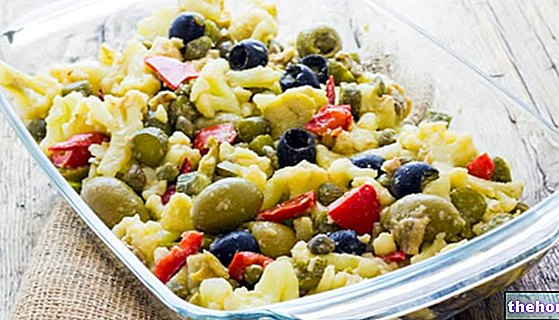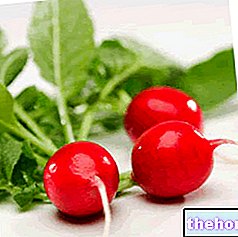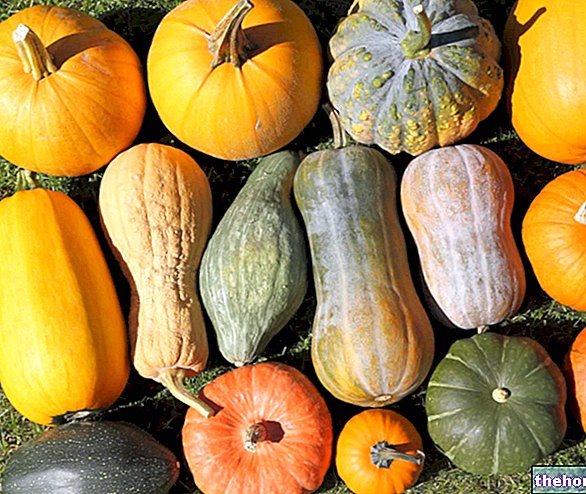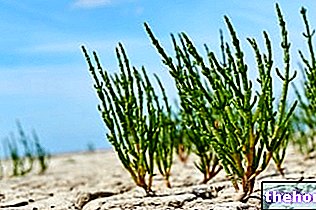
Cabbage and savoy cabbage can be classified according to the time of harvest; there are early, summer and late varieties, even if, from a dietary point of view, like most of the Brassica oleracea L. (especially Brussels sprouts), they are typically consumed in winter. Their resistance to cold is a highly "desirable" characteristic since, in the presence of low temperatures, most of the vegetables and fruits (vitamin C carriers) "should" become scarce or even disappear (except for potatoes which, from their part, they require prolonged cooking with the reduction of the vitamin C contained in them). The best known varieties of cabbage and savoy cabbage are:
- Early white cabbage: Copenhagen Market (tapered), Gloria di Enkhuizen, Filderkraut Spezialzucht (recommended for sauerkraut production)
- Early red cabbage: Negro head
- Early Savoy Cabbage: D "Asti Pasqualino
- Late red cabbage: Septemberrot, Monhrenkopl
- Late Savoy Cabbage: Late of Virtues, From Piacenza.

The contribution of potassium and iron (even if the latter is not very bioavailable) of the raw green cabbage is appreciable; it is not clear whether the purine content of cabbage and savoy cabbage is comparable to that of cauliflower (and probably broccoli) or lower.
By virtue of their resistance to cold, as for Brussels sprouts, late cabbage and savoy cabbage have played a DETERMINING dietary function for all populations in the north or colonizing continental territories. Late cabbage and savoy cabbage, like citrus fruits for the ethnic groups of the Mediterranean basin, are an "excellent source of vitamin C and equivalent retinol for most of the cold season (during which it would NOT be possible to find other vegetables instead available in the temperate season). Finally, green cabbage is the basis for the preparation of sauerkraut, a fermented food to be served cooked (therefore depleted of easily oxidizable and thermolabile vitamin C) rich in many other vitamins derived from microbial lactic fermentation.
* The β-carotene (provitamin A or equivalent retinol) of cabbage and savoy cabbage is concentrated to a greater extent in the outer leaves, those generally eliminated for hygiene reasons. The deeper the measurements are made, the lower the concentration of these molecules.
.
- Go to the Video Page
- Go to the Video Recipes Section
- Watch the video on youtube
How To Cook Fat Free Cabbage
Problems with playing the video? Reload the video from youtube.
- Go to the Video Page
- Go to the Video Recipes Section
- Watch the video on youtube
The sowing of cabbage and savoy cabbage takes place, based on earliness or late, between March and April in seed beds, after which (from April to June, again depending on the variety) they can be transplanted in the field at a distance of 40x40 or 50x50cm; for the success of the cabbage and savoy cabbage cultivation it is necessary to keep the soil soft and possibly moist.
The harvest of cabbage and savoy cabbage changes according to the variety of the plant; the late ones resist until the first frosts while the white cabbage can be fermented and preserved in pots in the form of Sauerkraut. They are suitable for intercropping with cabbage and savoy cabbage: tomatoes, celery, potatoes, spinach, salads, leeks and peas.
Bibliography: Vegetable garden and organic garden - M.L. Kreuter - Joints - page 164.
Other Foods - Vegetables Garlic Agretti Asparagus Basil Beets Borage Broccoli Capers Artichokes Carrots Catalonia Brussels sprouts Cauliflower Cabbage and Savoy cabbage Red cabbage Cucumber Chicory Turnip greens Onion Sauerkraut Watercress Edamame Chives Chanterelles Flour Cassava Flowers Pumpkin Flour Edible Flowers Pumpkin Seasonal Fruits and Vegetables Endive Salads and Salads Strengthening Salad Lettuce Aubergines Vegetables Nettle Pak-Choi Parsnip Potatoes American Potato Peppers Pinzimonio Tomatoes Leeks Parsley Radicchio Turnips Red Turnips Radishes Rocket Shallots Endive Celery Celeriac Seeds Sprouted Spinach Truffle Valianamberi or Jerusalem artichoke laxatives Saffron Pumpkin Zucchini Vegetables - Nutritional properties OTHER VEGETABLE ITEMS Categories Food Alcoholics Meat Cereals and derivatives Sweeteners Sweets Offal Fruit Dried fruit Milk and derivatives Legumes Oils and fats Fish and fishery products Cold cuts S pezie Vegetables Health recipes Appetizers Bread, Pizza and Brioche First courses Second courses Vegetables and Salads Sweets and Desserts Ice creams and sorbets Syrups, liqueurs and grappa Basic preparations ---- In the kitchen with leftovers Carnival recipes Christmas recipes Light diet recipes Women's Day, Mum, Dad Recipes Functional Recipes International Recipes Easter Recipes Recipes for Celiacs Recipes for Diabetics Recipes for Holidays Recipes for Valentine's Day Recipes for Vegetarians Protein Recipes Regional Recipes Vegan Recipes



























